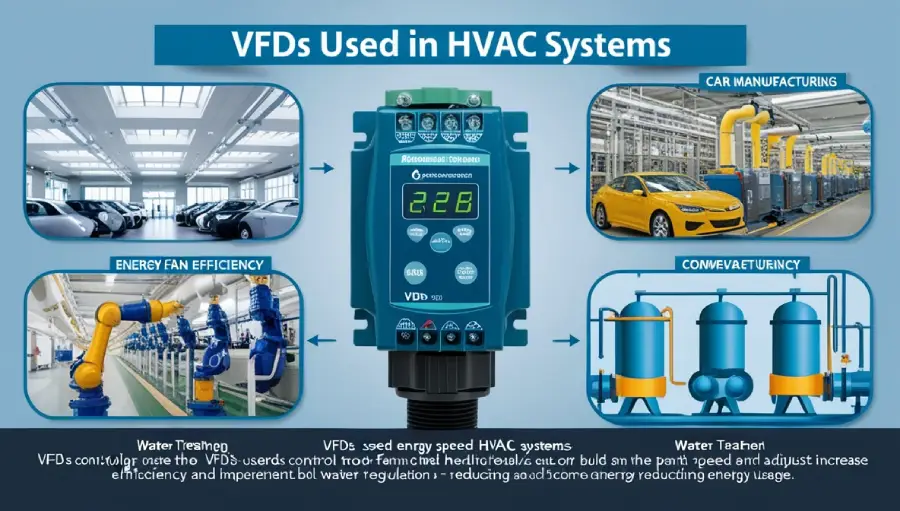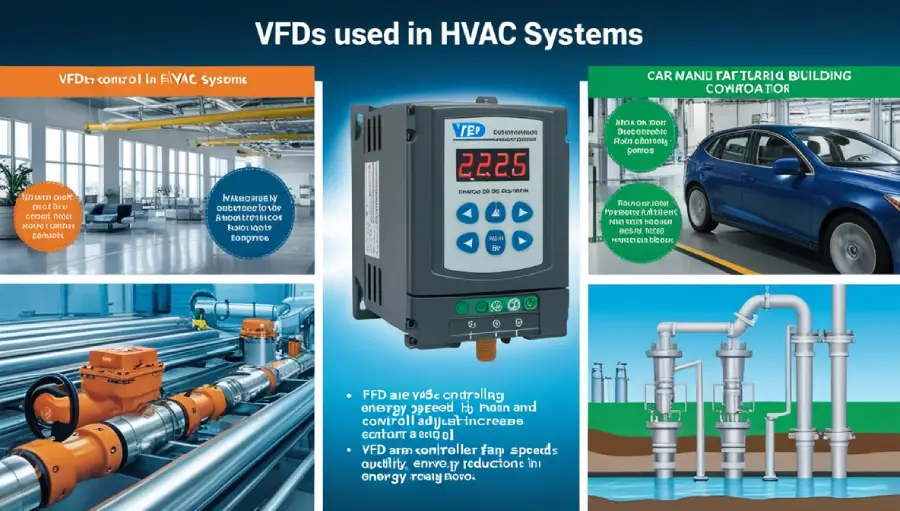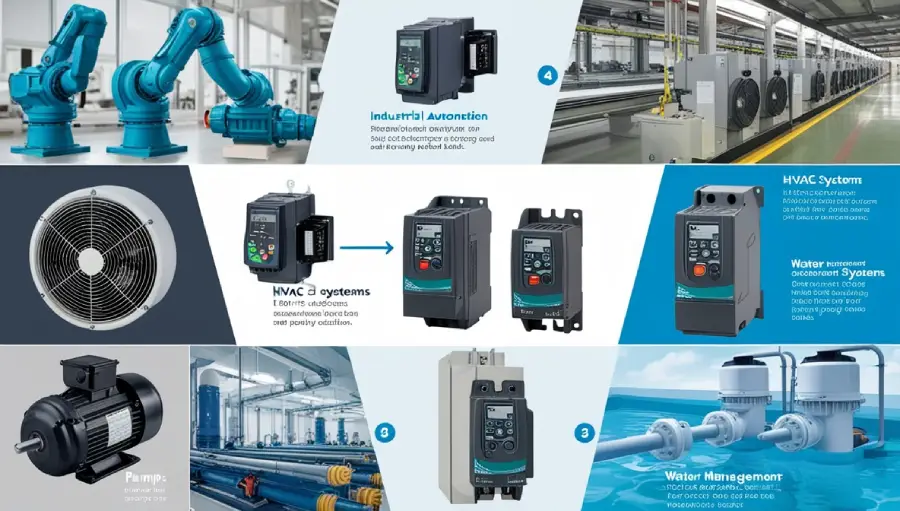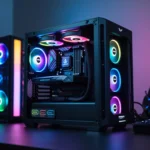Introduction
Variable Frequency Drives (VFDs) are essential devices in the world of automation and motor control. But what are VFDs used for? Simply put, VFDs adjust the speed and torque of electric motors by changing the frequency and voltage of the power supplied to them. This capability makes them incredibly useful in various applications, from industrial machinery to HVAC systems. In this article, we will explore the many uses of VFDs, their benefits, and how to choose the right one for your needs.
Applications of VFDs
VFDs are versatile tools used in numerous industries. Here are some common applications:
1. Industrial Automation
In manufacturing plants, VFDs control the speed of conveyor belts, pumps, and fans. This allows for precise control over production processes, improving efficiency and product quality.
2. HVAC Systems
VFDs are widely used in heating, ventilation, and air conditioning (HVAC) systems. They help regulate airflow and temperature, leading to energy savings and improved comfort.

3. Water and Wastewater Management
In water treatment facilities, VFDs control the speed of pumps, ensuring that water is circulated and treated efficiently. This is crucial for maintaining water quality and conserving energy.

4. Agricultural Equipment
Farmers use VFDs in irrigation systems to control water flow. This helps optimize water usage and improve crop yields.
5. Elevators and Escalators
VFDs provide smooth acceleration and deceleration for elevators and escalators, enhancing safety and comfort for users.
6. Mining and Quarrying
In mining operations, VFDs control heavy machinery, ensuring that equipment runs smoothly and efficiently, which is vital for productivity.
Benefits of Using VFDs
VFDs offer several advantages that make them a popular choice across various industries:
1. Energy Efficiency
By adjusting motor speed to match the load requirements, VFDs can significantly reduce energy consumption. This leads to lower electricity bills and a smaller carbon footprint.
2. Improved Process Control
VFDs allow for precise control over motor speed and torque, which enhances the overall quality of processes in manufacturing and other applications.
3. Extended Equipment Life
By reducing mechanical stress on motors, VFDs can prolong the lifespan of equipment, leading to fewer breakdowns and lower maintenance costs.
4. Enhanced Safety
VFDs provide smooth starts and stops, reducing the risk of accidents caused by sudden movements in machinery.
Discover how VFDs are used in HVAC systems to control motor speeds and save energy
How to Choose the Right VFD
Selecting the right VFD for your application is crucial. Here are some factors to consider:
1. Motor Size
Ensure that the VFD is compatible with the power rating of your motor. Check the VFD’s specifications to find a suitable match.
2. Load Type
Different applications may require specific features. For example, a VFD used for a pump might need different settings than one used for a conveyor belt.
3. Environmental Conditions
Consider the operating environment. If the VFD will be exposed to dust, moisture, or extreme temperatures, choose a model designed for those conditions.
4. Control Features
Look for VFDs with programmable settings and communication interfaces that allow for integration with other systems.
Installation and Wiring Basics for VFDs
Installing a VFD requires careful planning and execution. Here are some basic steps:
1. Read the Manual
Always start by reading the manufacturer’s installation manual. This will provide specific instructions tailored to your VFD model.
2. Wiring Diagrams
Follow the wiring diagrams provided in the manual. Typically, you will connect the motor leads to the VFD outputs and the power supply to the inputs.
3. Safety Precautions
- Turn off all power before starting the installation.
- Use appropriate personal protective equipment (PPE).
- Ensure proper grounding to avoid electrical hazards.
4. Testing
After installation, conduct tests to ensure the VFD operates correctly. Check for any unusual noises or vibrations.
Real-World Examples of VFD Applications
Manufacturing Example
In a car manufacturing plant, VFDs control robotic arms and conveyor belts. By adjusting speeds according to production needs, the plant has increased efficiency by 20%.

HVAC Example
A commercial building uses VFDs in its HVAC system to control fan speeds based on occupancy. This adjustment has led to a 30% reduction in energy costs.
Frequently Asked Questions (FAQs)
VFDs are used to control the speed and torque of electric motors, making them essential in various applications like manufacturing, HVAC, and water management.
By adjusting the motor speed to match the load requirements, VFDs reduce unnecessary energy consumption, leading to lower electricity bills.
Not all motors are compatible with VFDs. It’s important to check the motor’s specifications and ensure it can operate with a VFD.
Consider the motor size, load type, environmental conditions, and desired control features before making a purchase
Yes, VFDs are designed with safety features that help prevent accidents and protect both the equipment and operators.
Conclusion
In conclusion, VFDs play a vital role in modern automation and motor control. They are used in various applications, providing significant benefits such as energy efficiency, improved process control, and enhanced safety. Whether you are an engineer, technician, or DIY enthusiast, understanding what VFDs are used for can help you make informed decisions in your projects.
If you’re curious about the specific uses of VFDs in various industries, check out the applications of ABB VFDs.
For further reading, check out our articles on Toshiba VFDs for more information on related topics.




7 thoughts on “What Are VFDs Used For?”